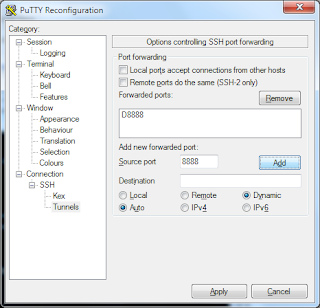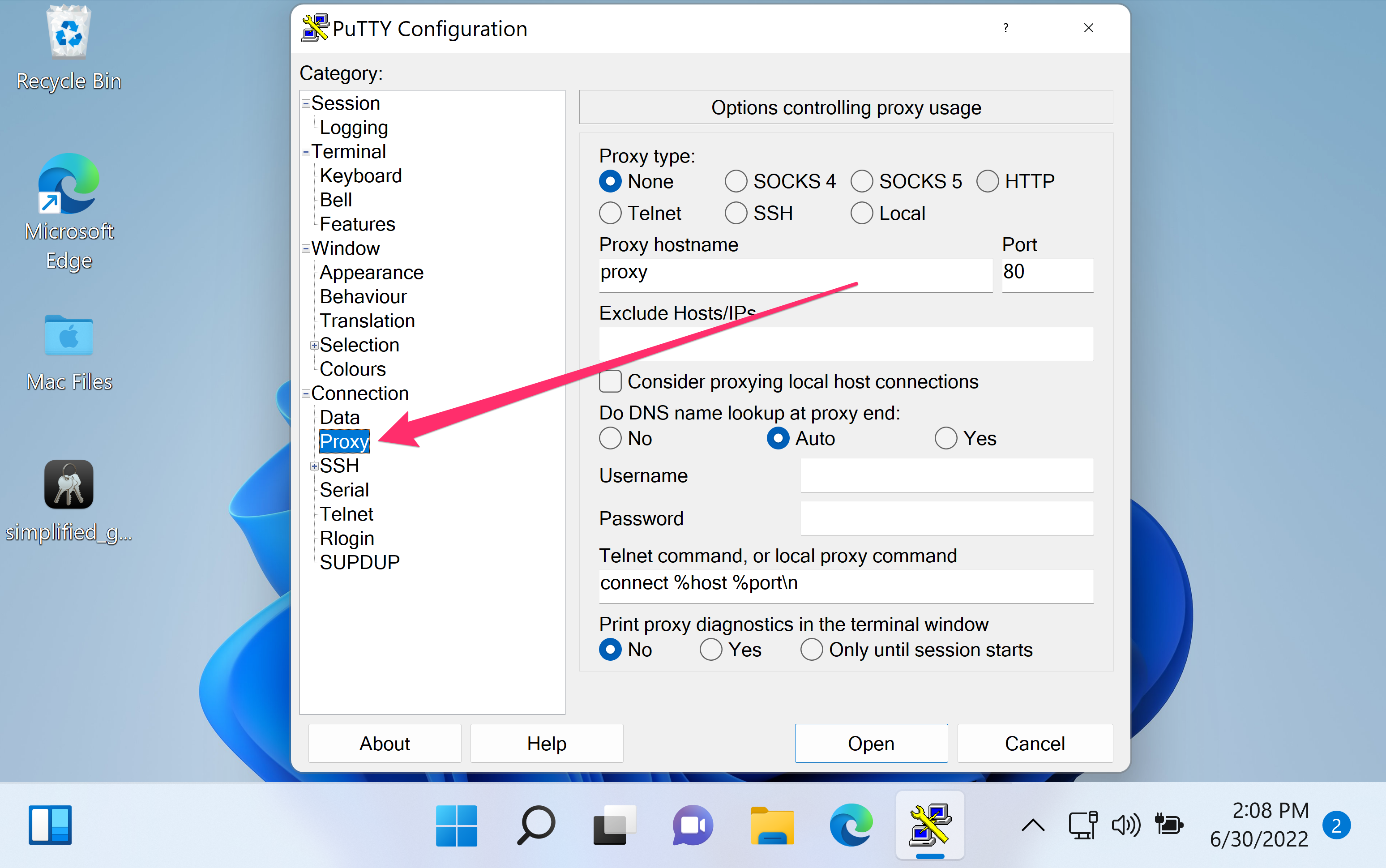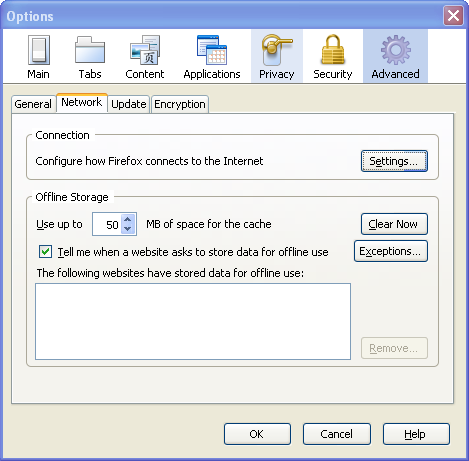

localhost:5000), it says to that server, as per the SOCKS protocol: "hello, I want to talk to on port 80".

When an application connects to the SOCKS server on A (i.e.PuTTY is connected with SSH to machine B (the SSH server).On machine A (the SSH client), PuTTY maintains a server on a given port (say, 5000) and expects clients to "talk SOCKS" (a specific protocol).You get SOCKS by selecting the "dynamic" option in PuTTY. SOCKS is a protocol which tries to fix these issues. The target server may not like it, if its name is not. For instance, if the application wants to talk to a HTTP URL like, then, regardless of how well intercepted and tunnelled the connection is, the application will send through it a HTTP request header which says "this is for ". The name that the application sees may resurface in the protocol.I have done that a lot on Linux, but I don't know if this will work well with Windows. In case of port conflict, you might want to play with several local addresses, e.g. If you want to setup several tunnels, you will need to allocate several local ports.If an application wants to connect to port P, then you will have to initialize your tunnel with the local port P and none other. The "hosts" file is just for names, not for ports.The "hosts" file acts at the name resolution level, it cannot do anything for connections which use application-specified IP addresses.The ultimate destination is fixed, through configuration.You will run into the following problems: This kind of tunnelling is clunky and not very flexible. Then when an application tries to connect to, say, URL, the port tunnel applies and the data, ultimately, will reach on port 80.

With the example above, if one adds the following line to the "hosts" file: 127.0.0.1 Some applications can be configured easily for others, you can play with the "hosts" file (on Windows, look for it in C:\Windows\system32\drivers\etc\hosts). The tricky point is to convince an application to connect to "localhost" instead of a normal, named server.
Putty ssh proxy software#
In the guide example, the local port is 8080, and the remote host-and-port is This means that when PuTTY is launched on machine A and connects (with SSH) to a machine B, any software S running on A and connecting to localhost:8080 on A will trigger a new connection from B to what S writes onto its connection to localhost:8080 will be tunnelled through SSH, and then, on B, written onto the connection which points to Traffic in the other direction is also forwarded.
Putty ssh proxy how to#
This guide shows how to setup such a tunnel. When an incoming connection to that server occurs, the client talks to the SSH server and makes it create a new connection, from the server machine to a configured remote host and then the SSH client and server forward data bytes between the two connections and through the SSH tunnel. Port tunnelling: the SSH client (PuTTY) runs a local server, listening on some port on the client (by default, it will accept only connections from localhost, not from remote systems, so that's "safe"). The SSH protocols allows for two main ways to do some "proxying": port tunnelling, and SOCKS. You can also enable this mode on the command line see section 3.8.3.24.PuTTY implements the SSH protocol. See section 3.8.3.14 for more information.

If you want your local proxy command to make a secondary SSH connection to a proxy host and then tunnel the primary connection over that, you might well want the -nc command-line option in Plink. This could be used, for instance, to talk to some kind of network proxy that PuTTY does not natively support or you could tunnel a connection over something other than TCP/IP entirely. When the session is started, instead of creating a TCP connection, PuTTY runs the command (specified in section 4.15.5), and uses its standard input and output streams. Selecting ‘Local’ allows you to specify an arbitrary command on the local machine to act as a proxy. Selecting ‘Telnet’ allows you to tell PuTTY to use this type of proxy. Many firewalls implement a less formal type of proxy in which a user can make a Telnet connection directly to the firewall machine and enter a command such as connect 22 to connect through to an external host. Selecting ‘SOCKS 4’ or ‘SOCKS 5’ allows you to proxy your connections through a SOCKS server. Selecting ‘HTTP’ allows you to proxy your connections through a web server supporting the HTTP CONNECT command, as documented in RFC 2817. The default setting is ‘None’ in this mode no proxy is used for any connection. The ‘Proxy type’ radio buttons allow you to configure what type of proxy you want PuTTY to use for its network connections. Previous page next page 4.15.1 Setting the proxy type


 0 kommentar(er)
0 kommentar(er)
